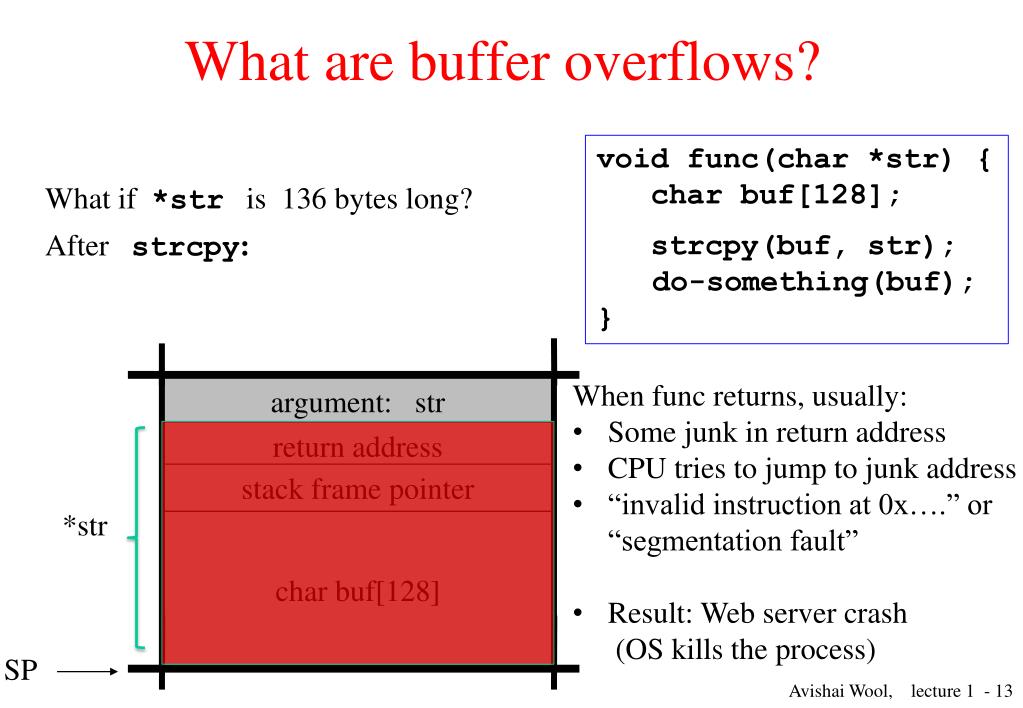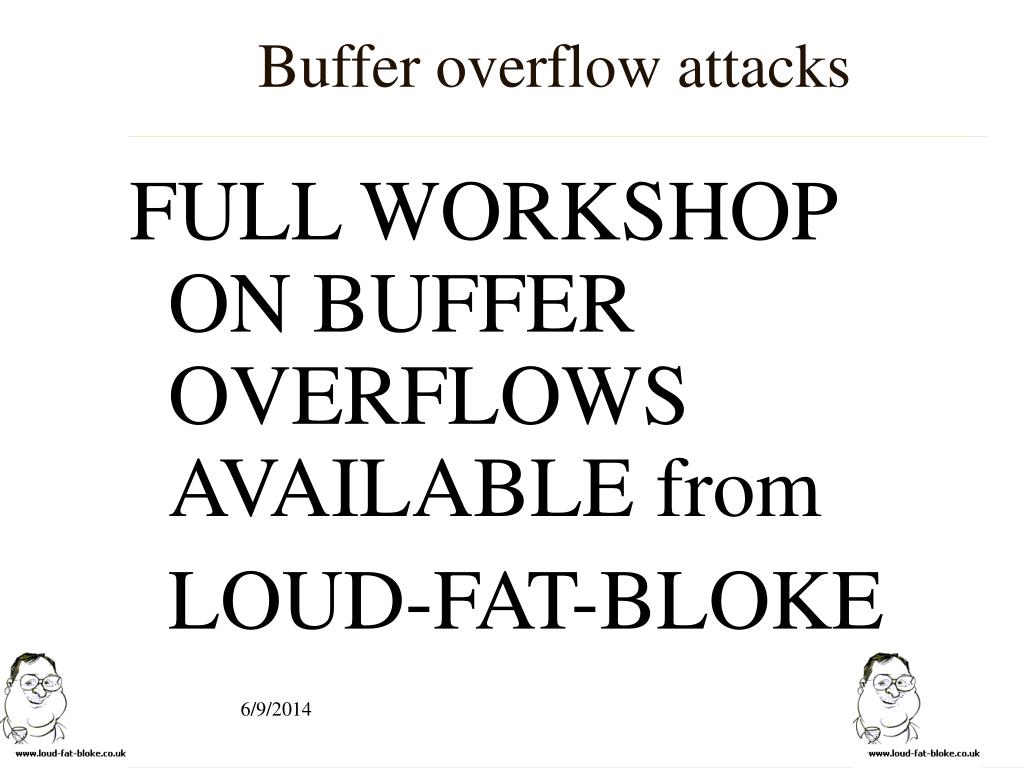

Then, the hacker inserts a malicious shell code and controls the system. Exploiting Buffer Overflow: Three main important steps: 1.

Objective of the challenge: Read the content of the file private. This is done to know the size of the buffer and the return address. What is Buffer Overflow Attack As the wiki says, buffer overflow is an anomaly where a program, while writing data to a buffer, overruns the buffer’s boundary and overwrites adjacent memory locations. Once successful, the attacker proceeds to find the offset, which is where the buffer overflowed. However, buffer overflow bug explication is beyond the scope of this paper except for brief outline. In this article, it was being presented overflow related bugs in details, particularly overrun. match between domain and server-origin stops the attack. Integer overflow often leads to a buffer overflow in which integer overflows occur when computing the size of the memory to allocate. Then comes fuzzing, which is similar to spiking, but here, the hacker sends characters to the program to see if it can be broken. buffer overflow, or (5) heap overflow vulnerability sub-classes. Here, the hackers find the part of the program's memory that's vulnerable to buffer overflows. There are five major steps in buffer overflow attacks: Then, the hacker gets control of the system. The EIP is then written to redirect the system back to the malicious code, and it is made to run. The attacker can even write some data that contains malicious code and cause the buffer to overflow. Then they make sure the EIP or return address is written to point to a program that can give them access to the system or reveal sensitive information stored on the system. When the attacker knows the size of a system's memory, they can intentionally write data into that system just to overflow it. The attack exploited flaws in a particular type of UNIX operating system, including the buffer. A self-replicating program, called a worm, copied itself across thousands of computers throughout the country in a span of just hours, rendering the infected hosts useless.

Buffer overflow attacks happen when the hacker takes control of the return address or EIP. This was the year of the first major viral attack on the internet.


 0 kommentar(er)
0 kommentar(er)
